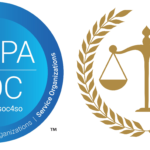Legal professionals have a lot to keep track of, from deadlines and court appearances to document submissions and client communication. Missing a deadline or forgetting a critical piece of information can have serious consequences for a case or client, making it essential for lawyers to have a reliable system for managing their workload.
One tool that has proven helpful in this regard is the legal digital tickler system. In this article, we’ll explore what a legal tickler system is, how it works, and why it’s an essential tool for legal professionals.
What is a Legal Tickler System?
At its most basic level, a legal tickler system is a calendaring tool that allows lawyers and legal staff to keep track of important deadlines, events, and tasks related to their cases and clients. The system “ticks” off each task as it comes due, reminding the user to take action and ensuring that nothing falls through the cracks.
Traditionally, legal tickler systems were manual and paper-based, with lawyers and support staff manually entering dates into a physical calendar or tickler file. However, with the advent of technology, electronic tickler systems have become more prevalent.
Electronic tickler systems are digital tools that automate the process of tracking case timelines and deadlines. These systems allow lawyers and support staff to enter case deadlines and appointments into a database, which then generates automated reminders to ensure that important dates are not missed. This saves time and reduces the risk of human error, which can be costly in the legal industry.
One of the key benefits of electronic tickler systems is that they can be accessed from anywhere with an internet connection. This makes online tickler systems especially convenient for lawyers who work remotely or need to access case information while on the go. Online tickler systems also allow multiple users to access the same information, which can be helpful for large law firms with many attorneys and support staff.
In addition to the convenience factor, electronic tickler systems also offer greater flexibility and customization. For example, some systems allow users to create custom rules and workflows for different types of cases. This means that the system can be tailored to the specific needs of a law firm, rather than forcing the firm to conform to a one-size-fits-all solution.
How Do Legal Tickler Systems Work?
The exact workings of a legal tickler system will depend on the specific tool or method being used. However, there are some general principles and best practices that apply to most systems.
One key aspect of any legal tickler system is the initial setup process. This involves identifying all of the deadlines and tasks associated with a case or client and determining when each task needs to be completed. Once these tasks and deadlines are identified, they can be entered into the tickler system, along with any relevant details or notes.
As the case progresses, the tickler system will generate reminders and alerts for each task as it comes due. This might involve sending an email to the responsible party, generating a pop-up alert on a computer screen, or even printing out a paper reminder.
In some cases, legal tickler systems will also include escalation procedures for overdue tasks or missed deadlines. For example, if an attorney fails to file a motion on time, the system might send an alert to a supervisor or partner to ensure that the issue is addressed promptly.
Why Are Legal Tickler Systems Important?
Legal tickler systems are important for several reasons. First and foremost, they help ensure that critical deadlines and tasks are not overlooked or forgotten. This can be especially important in the legal field, where missing a deadline or failing to complete a task can have serious consequences for a case or client.
In addition to helping prevent mistakes, legal tickler systems can also improve efficiency and productivity. By automating the process of tracking deadlines and tasks, legal professionals can save time and focus on other aspects of their work.
One benefit of an electronic tickler system is the ability to set up a Matter Timeline, which is a comprehensive view of all deadlines and tasks associated with a case or client. This timeline allows legal professionals to see all upcoming deadlines and tasks, the status of each task, and who is responsible for completing it.
Finally, a digital tickler system can help law firms manage risk and liability. By having a reliable system in place for tracking deadlines and tasks, firms can demonstrate to clients and courts that they take their obligations seriously and are committed to providing high-quality legal services.
Conclusion
Legal tickler systems are an essential tool for legal professionals. Whether they are based on paper, a digital tickler system, or an online tickler system, these systems help ensure that critical deadlines and tasks are not overlooked or forgotten. By using a legal tickler system, legal professionals can improve efficiency, manage risk, and provide better service to their clients. While there are many different ways to implement a tickler system, the most important thing is to find a method that works for your firm and your team.
To get the most out of a legal tickler system, it’s important to follow best practices and establish clear procedures for how the system will be used. This might involve setting up protocols for how deadlines and tasks are entered into the system, assigning responsibility for each task to a specific individual, and establishing escalation procedures for overdue tasks or missed deadlines.
It’s also important to regularly review and update the tickler system as the case progresses. New deadlines and tasks may arise, while others may be completed or become irrelevant. By staying on top of these changes and updating the tickler system accordingly, legal professionals can ensure that they are always working with the most up-to-date information.




